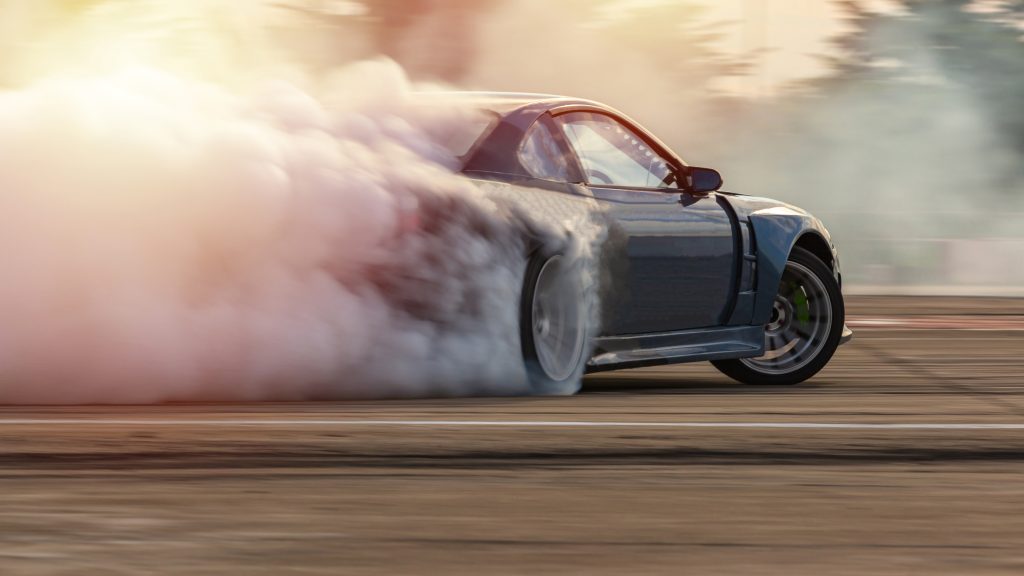So, you think your race car is fast? Well, think again! There’s always room for improvement when it comes to pushing the limits of speed on the racetrack. In this article, we will uncover some unconventional strategies and modifications that can help you squeeze every last bit of velocity out of your vehicle. From exploring the world of aerodynamics to experimenting with alternative concepts, we will challenge conventional thinking and offer you a fresh perspective on how to achieve mind-boggling top speeds. So, buckle up and get ready for a wild ride as we uncover the secrets to unlocking your race car’s true potential.
Importance of Vehicle Aerodynamics
The importance of vehicle aerodynamics cannot be overstated, as it plays a crucial role in overcoming aerodynamic drag and optimizing driving performance. Aerodynamic drag reduction is essential in order to achieve higher speeds and improve fuel efficiency. To achieve this, wind tunnel testing and computational fluid dynamics (CFD) analysis are commonly used to evaluate the aerodynamic performance of a vehicle. These tools allow engineers to assess the airflow around the vehicle and identify areas of high drag. By analyzing the data obtained from these tests, drag reduction techniques can be implemented to optimize the vehicle’s body shape. This can include modifying the front grille, adding spoilers or diffusers, and streamlining the overall design. Vehicle body shape optimization is a complex process that requires careful consideration of various factors, such as the vehicle’s intended use, weight distribution, and aerodynamic balance. By reducing aerodynamic drag, vehicles can achieve higher top speeds, improve fuel efficiency, and enhance overall performance on the road or track.
Ways to Reduce Friction in Vehicles
Now let’s explore some effective strategies for reducing friction in vehicles, which is crucial for optimizing driving performance and achieving higher speeds. Reducing friction can be achieved through various methods such as lubricant selection, tire design, suspension system optimization, improving vehicle load distribution, and considering weather and traffic conditions.
| Strategies | Benefits |
|---|---|
| Lubricant selection | Reduces friction between moving parts, improving performance and efficiency. |
| Tire design | Minimizes rolling resistance, enhancing acceleration and top speed. |
| Suspension system optimization | Minimizes friction between the tires and the road, improving handling and ride comfort. |
| Improving vehicle load distribution | Ensures even weight distribution, reducing the load on individual tires and minimizing friction. |
| Considering weather and traffic conditions | Adjusting driving techniques and vehicle settings based on weather and traffic conditions can reduce friction and improve overall performance. |
Choosing high-quality lubricants helps reduce friction between moving parts, improving performance and efficiency. Opting for high-performance tires with low rolling resistance minimizes the friction between the tires and the road, enhancing acceleration and top speed. Optimizing the suspension system reduces friction between the tires and the road, resulting in improved handling and ride comfort. Improving vehicle load distribution ensures even weight distribution, reducing the load on individual tires and minimizing friction. Lastly, considering weather and traffic conditions allows for adjustments in driving techniques and vehicle settings to reduce friction and enhance overall performance. By implementing these strategies, you can effectively reduce friction in your vehicle, leading to improved driving performance and higher speeds.
Benefits of Using Lubricants
Using lubricants in your vehicle offers numerous benefits that contribute to improved performance and efficiency. One of the primary advantages of using lubricants is the reduced wear between moving parts. The lubricant forms a protective layer that minimizes friction and prevents metal-to-metal contact, thereby extending the lifespan of the components. This reduction in wear also leads to smoother operation, as the lubricant helps to maintain the optimal functioning of the parts.
In addition to reducing wear, lubricants also improve the efficiency of your vehicle. By reducing friction, the lubricant allows the parts to move more freely, requiring less energy to operate. This improved efficiency translates into better fuel economy and overall performance.
Furthermore, using high-quality lubricants ensures optimal performance of your vehicle. The lubricant helps to maintain the proper functioning of the engine, transmission, and other vital components, allowing them to work at their best. This optimal performance contributes to a smoother and more enjoyable driving experience.
Factors Affecting Rolling Resistance
Rolling resistance, a key factor in vehicle performance, is influenced by various factors that should be carefully considered. Understanding these factors can help optimize the top speed of your race car.
Factors affecting rolling resistance include:
- Tire design: The design of the tire, including the bead and belt, plays a crucial role in determining rolling resistance. Different tire designs can have varying levels of resistance.
- Inflation pressure: Maintaining the correct inflation pressure is essential for reducing rolling resistance. Properly inflated tires minimize static friction between the tires and the road, allowing for smoother and more efficient movement.
- Weather conditions: Weather conditions, such as temperature and humidity, can impact rolling resistance. For example, colder temperatures can cause tires to become stiffer, resulting in increased resistance.
- Vehicle load and weight distribution: The weight of the vehicle and how it is distributed can affect rolling resistance. Properly distributing the weight can help reduce resistance and improve overall performance.
Considering these factors when optimizing your race car’s top speed can make a significant difference in its performance on the track. Paying attention to tire design, maintaining proper inflation pressure, accounting for weather conditions, and optimizing vehicle load and weight distribution can help reduce rolling resistance and improve overall speed and efficiency.
Importance of Streamlined Features
Streamlined features play a crucial role in reducing aerodynamic drag and improving the top speed of your race car. Aerodynamic design is key to maximizing the performance of your vehicle. One important component of aerodynamic design is the use of spoilers. Spoilers are aerodynamic devices that help to reduce drag by channeling airflow around the car. They are not only functional but also add to the visual appeal of the car.
The effectiveness of spoilers in reducing drag depends on various factors. Weather conditions, such as wind speed and direction, can impact the performance of spoilers. In certain weather conditions, spoilers may have a greater impact on reducing drag and improving top speed. Additionally, the design of the spoiler itself plays a significant role. Even small changes in the design of the spoiler can have a significant impact on aerodynamics.
It is important to note that while spoilers are effective in reducing drag, they are not the only factor to consider. Other streamlined features, such as a sleek body design and optimized airflow around the vehicle, also contribute to reducing aerodynamic drag. By incorporating these streamlined features into the design of your race car, you can enhance its top speed and overall performance on the track.
Aerodynamic Setups and Innovations
When it comes to maximizing the aerodynamic performance of your race car, exploring various aerodynamic setups and innovations is crucial. Incorporating aerodynamic modifications, innovative designs, and drag reduction techniques can lead to significant performance enhancements and efficiency improvements. Here are four key areas to focus on:
- Aerodynamic modifications: Implementing changes to the bodywork, such as adding splitters, diffusers, or canards, can help optimize airflow and reduce drag.
- Innovative designs: Exploring unconventional design elements, such as active aerodynamics or adjustable wings, can provide flexibility in adapting to different track conditions and maximize overall performance.
- Performance enhancements: Investing in wind tunnel testing and computational fluid dynamics analysis can aid in fine-tuning aerodynamic setups and identifying areas for improvement.
- Efficiency improvements: Striving for a balance between downforce and drag is essential for achieving higher top speeds. By minimizing drag without sacrificing too much downforce, you can optimize the overall efficiency of your race car.
Alternative Aerodynamic Concepts
To further explore innovative approaches to maximizing aerodynamic performance, let’s now turn our attention to alternative aerodynamic concepts that can enhance the efficiency and speed of your race car. These concepts involve unconventional methods that challenge traditional aerodynamic designs. Take a look at the table below to understand the unique features and benefits of each concept:
| Alternative Aerodynamic Concept | Description | Benefits |
|---|---|---|
| Running without rear wing | Eliminating the rear wing reduces drag and increases top speed. | Improved efficiency and reduced aerodynamic resistance. |
| Solid front wishbone | Using a solid front wishbone instead of a traditional suspension system reduces drag and improves airflow. | Enhanced aerodynamic performance and improved stability. |
| Rim blankings | Placing blankings over the rims reduces turbulence and drag. | Increased efficiency and improved overall performance. |
| F duct system | The F duct system redirects airflows to reduce drag and increase top speed. | Enhanced aerodynamic efficiency and improved acceleration. |
| Sidepod wing mirrors | Mounting wing mirrors on the sidepods increases downforce and reduces drag. | Improved stability and enhanced aerodynamic performance. |
Mercedes’ Performance Upgrades
Mercedes has introduced a series of performance upgrades aimed at increasing top speed and reducing drag in the upcoming season. These upgrades have been developed through extensive performance analysis and are designed to close the performance gap with rivals. The key areas of focus for Mercedes’ performance upgrades include:
- Aerodynamic optimization: Mercedes has made significant improvements to the aerodynamics of their race car, streamlining the body to reduce drag and increase top speed. This includes the use of spoilers and other aerodynamic devices to channel airflow around the car.
- Tire selection: Mercedes has carefully selected high-performance tires from reputable brands that provide excellent grip and traction. The use of sticky tires, such as the Nankang AR-1 or Toyo Proxes R888R, ensures improved acceleration and better overall performance.
- Engine tuning: Mercedes has fine-tuned their engine to maximize power output and acceleration. This includes upgrades to the exhaust system, such as a performance exhaust manifold for naturally aspirated cars or a downpipe for turbocharged cars. Additionally, the ECU has been remapped to optimize engine performance.
- Performance suspension upgrades: Mercedes has implemented a performance suspension system that minimizes friction between the tires and the road, improving handling and overall performance. This includes upgrades to components such as shock absorbers, springs, and sway bars.


